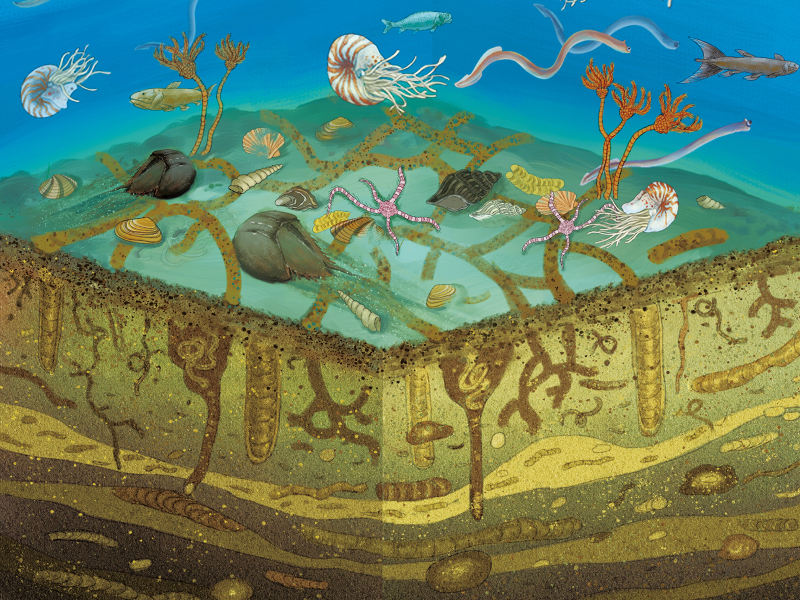Xueqian Feng:
ORCID: https://orcid.org/0000-0002-3765-9824
Role: ConceptualizationRole: InvestigationRole: MethodologyRole: ResourcesRole: ValidationRole:
VisualizationRole: Writing - original draftRole: Writing - review & editing
Zhong-Qiang Chen:
ORCID: https://orcid.org/0000-0001-5341-6913
Role: ConceptualizationRole: Data curationRole: Formal analysisRole: Funding acquisitionRole:
InvestigationRole: MethodologyRole: Project administrationRole: SupervisionRole: ValidationRole:
VisualizationRole: Writing - original draftRole: Writing - review & editing
Michael J. Benton:
ORCID: https://orcid.org/0000-0002-4323-1824
Role: ConceptualizationRole: Writing - original draftRole: Writing - review & editing
Chunmei Su: Role: Data curationRole: Formal analysisRole: ResourcesRole: SoftwareRole: ValidationRole:
Visualization
David J. Bottjer: Role: ConceptualizationRole: MethodologyRole: SupervisionRole: Writing - original
draftRole: Writing - review & editing
Alison T. Cribb:
ORCID: https://orcid.org/0000-0002-8604-6100
Role: Writing - review & editing
Ziheng Li: Role: Data curationRole: Formal analysisRole: InvestigationRole: MethodologyRole:
SoftwareRole: ValidationRole: Visualization
Laishi Zhao: Role: Formal analysisRole: Funding acquisitionRole: MethodologyRole: ResourcesRole:
SoftwareRole: Validation
Guangyou Zhu: Role: Data curationRole: Formal analysisRole: Validation
Yuangeng Huang:
ORCID: https://orcid.org/0000-0002-2900-3331
Role: ConceptualizationRole: Formal analysisRole: InvestigationRole: ResourcesRole:
SoftwareRole: VisualizationRole: Writing - review & editing
Zhen Guo: Role: ConceptualizationRole: Formal analysisRole: Methodology
Journal ID (nlm-ta): Sci Adv
Journal ID (iso-abbrev): Sci Adv
Journal ID (publisher-id): sciadv
Journal ID (hwp): advances
Title:
Science Advances
Publisher:
American Association for the Advancement of Science
ISSN
(Electronic):
2375-2548
Publication date Collection:
June
2022
Publication date
(Electronic, pub):
29
June
2022
Volume: 8
Issue: 26
Electronic Location Identifier: eabo0597
Affiliations
[1
]State Key Laboratory of Biogeology and Environmental Geology, China University of
Geosciences, Wuhan 430074, China.
[2
]School of Earth Sciences, University of Bristol, Bristol BS8 1RJ, UK.
[3
]Department of Earth Sciences, University of Southern California, Los Angeles, CA 90089,
USA.
[4
]State Key Laboratory of Geological Process and Mineral Resources, China University
of Geosciences, Wuhan 430074, China.
[5
]Research Institute of Petroleum Exploration and Development, PetroChina, Beijing 100083,
China.
Author notes
Author information
Article
Publisher ID:
abo0597
DOI: 10.1126/sciadv.abo0597
PMC ID: 9242451
PubMed ID: 35767613
SO-VID: 4fef5fad-2826-4f1c-8d38-b05443d328ec
Copyright © Copyright © 2022 The Authors, some rights reserved; exclusive licensee American Association
for the Advancement of Science. No claim to original U.S. Government Works. Distributed
under a Creative Commons Attribution NonCommercial License 4.0 (CC BY-NC).
License:
This is an open-access article distributed under the terms of the
Creative Commons Attribution-NonCommercial license, which permits use, distribution, and reproduction in any medium, so long as the
resultant use is
not for commercial advantage and provided the original work is properly cited.
Funded by:
FundRef http://dx.doi.org/10.13039/501100001809, National Natural Science Foundation of China;
Award ID: 41821001
Funded by:
FundRef http://dx.doi.org/10.13039/501100001809, National Natural Science Foundation of China;
Award ID: 4193000537
Funded by:
FundRef http://dx.doi.org/10.13039/501100001809, National Natural Science Foundation of China;
Award ID: 42002006
Funded by:
FundRef http://dx.doi.org/10.13039/501100001809, National Natural Science Foundation of China;
Award ID: 92055212
Subject:
Research Article
Subject:
Earth, Environmental, Ecological, and Space Sciences
Subject:
SciAdv r-articles
Subject:
Ecology
Subject:
Paleontology
Subject:
Paleontology

